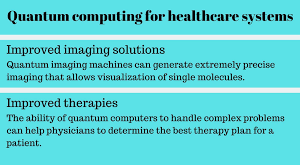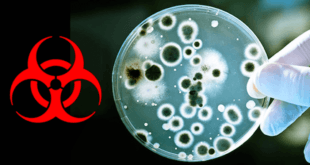In early 2024, the U.S. Army is set to unveil two groundbreaking initiatives as part of its comprehensive modernization of health and fitness practices. Spearheaded by George Matook and his team at the Army Combat Capabilities Development Command Soldier Center, these initiatives represent a significant leap forward in enhancing soldiers’ …
Read More »Shedding Light on the Future of Neuroscience: The Optogenetic Brain Probe
Introduction: In the ever-evolving landscape of neuroscience, researchers are continually seeking innovative ways to unlock the mysteries of the brain. The human brain, a complex and intricate network of neurons, remains largely a mystery. But what if we could peek inside and not only observe its activity, but also influence it …
Read More »Revolutionizing Healthcare: The Potential of Quantum Computers
Introduction: Healthcare is a cornerstone of society, consuming a substantial portion of the GDP in most developed countries. Despite advancements, the industry faces persistent challenges like prolonged drug development timelines, misdiagnoses, and limited access to personalized treatments. In recent years, quantum computing has emerged as a disruptive technology with the …
Read More »Reimagining Our Planet: How Biotechnology is Championing Sustainability
The convergence of biotechnology and environmental science illuminates a path toward sustainable development, offering innovative solutions to the daunting environmental challenges facing our planet. This exploration delves into the multifaceted ways biotechnology is harnessing nature’s intrinsic power to champion environmental sustainability, showcasing transformative solutions that blend biological principles with advanced …
Read More »Breaking Boundaries: The Fascinating World of Male-Male Reproduction
Introduction In a groundbreaking study published in the journal Nature, researchers have achieved a remarkable feat: creating viable eggs from cells taken from male mice. This innovative approach opens up new possibilities in the realm of reproduction, with potential applications ranging from treating infertility to enabling single-parent reproduction. However, while …
Read More »DARPA Ceres remediation program for soil contaminated with explosives and aircraft fuel
Soil contamination, stemming from industrial activities, agricultural practices, and improper waste disposal, poses significant environmental risks. Defense operations, such as fuel spills and explosives, leave residual contaminants, prompting initiatives like DARPA’s Ceres program. Ceres seeks to develop cost-effective, plant-based approaches to soil remediation, aiming to engineer plant-microbe communities capable of autonomously …
Read More »Navigating the Ethical Terrain of Synthetic Biology: Addressing Biosecurity, Environmental Impact, and Access
Introduction: The rapid advancement of genetic engineering and synthetic biology has ushered in a new era of possibilities, from personalized medicine to sustainable agriculture. However, alongside these groundbreaking developments come profound ethical dilemmas that demand careful consideration. In this article, we explore the ethical concerns inherent in synthetic biology, ranging …
Read More »Revolutionizing Military Operations: The Neurotech Race for Brain-Computer Interfaces to Control Multiple Robots with the Speed of Thought
The concept of controlling machines with our minds has been the stuff of science fiction for decades, but thanks to advances in neurotechnology, it is becoming a reality. Brain-Computer Interface (BCI) technology has been developing rapidly in recent years, with a growing number of researchers and companies working on developing …
Read More »Revolutionizing Orthopedic Implants: The Crucial Role of Biomaterial Technology
Introduction: In the realm of orthopedic engineering, the focus has historically been on the biomechanical strength of implants, ensuring their durability and resilience under various forces. Traditionally, materials like titanium and PEEK have dominated the field, emphasizing biomechanical strength but often neglecting the crucial aspect of biocompatibility. However, an equally …
Read More »Optical Sensor Technology Revolutionizing Biomedical Applications and Military Healthcare
Introduction: Optical sensor technology is ushering in a new era in healthcare, particularly in biomedical applications and military healthcare. The Centers for Disease Control and Prevention (CDC) reports alarming statistics on high blood pressure and heart diseases, highlighting the critical need for continuous health monitoring. Optical sensors, with their ability …
Read More » International Defense Security & Technology Your trusted Source for News, Research and Analysis
International Defense Security & Technology Your trusted Source for News, Research and Analysis



